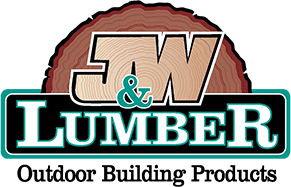
For outdoor building projects like decking, fences, gates and patio covers, more people are recognizing the benefits of cedar. Builders and lumber experts have long known about the benefits of cedar, but now it’s your turn to familiarize yourself with this useful, charming wood.
Western Red Cedar: Attractive at Every Grade
Western red cedar is a durable option for outdoor building projects because of its natural resistance to rot, decay, and insects. Since this lumber is a unique mixture of reds, dark browns, and light tans, it ages beautifully, often greying into a silver-ish hue after prolonged exposure to sunlight.
Where it’s grown: Western red cedar is grown and harvested along North America’s western coast, from California up to Alaska. It is often found in areas that are also conducive to growing Douglas fir and western hemlock.
The look: Western red cedar has a rich, classic look that catches the eye in all its applications. Uniform in color, this cedar features variation on light tan with some dark chocolate coloring mixed in—all with a red tint that gives this gorgeous wood its name. Because it still looks good even at rough grades, we see Western red cedar used often in high end patio covers and other eye-catching projects.
How it performs: One of the best things about Western red cedar is its usefulness across the construction spectrum. A uniform grain pattern gives stability to the wood, so it won’t twist and turn as much as other woods while enduring outdoor heat and moisture.
How it’s used: Because of its beauty and versatility, Western red cedar lumber is used in outdoor building projects that are meant to make a statement. In addition to decking and patio covers, we have seen striking horizontal fencing applications that show off a horizontal grain pattern. We have also seen beautiful pieces with a clear grain pattern used for attractive outdoor finishing projects. Finally, Western red cedar is the wood of choice in our most popular pre-assembled gate kits from Sederra. Because we ship nationwide, homeowners across the country can now upgrade their yards by installing a gorgeous cedar gate.
Finishing touches: Cedar takes stain well, enabling you to get creative with your choice of colors. Though the wood does have a rosy undertone, its natural color isn’t as deep as other woods, so you maintain control over the finished hue.
Alaskan Yellow Cedar: Rare Yet Affordable
Alaskan yellow cedar technically isn’t cedar at all—it’s a cypress. However, it is used in many of the same applications as cedar, which might explain the misnomer. Though it’s not common to find Alaskan yellow cedar construction throughout Southern California, that has more to do with its availability than its usefulness. Much of this semi-scarce wood is shipped directly to Japan for use in framing temples and other structures. However, we are one of the very few lumberyards in Southern California that stock Alaskan yellow cedar, so you now have the chance to introduce this appealing, versatile wood into your own outdoor building projects.
Where it’s grown: This durable softwood is grown only in very specific regions of Alaska and Canada, which might explain why it is relatively uncommon in the lower 48.
The look: As its name suggests, Alaskan yellow cedar features a yellow cast that provides a light, neutral base that looks great both sealed or stained.
How it performs: Though categorized as a soft wood, Alaskan yellow cedar is exceptionally dense. This density gives it even greater durability than Western red cedar, enabling it to stand up to the elemental rigors that would warp or deteriorate weaker woods more quickly.
How it’s used: Unlike most other lumber, Alaskan yellow cedar is approved for ground contact. Therefore, it is an optimal choice for fence posts and patio covers that come in direct contact with the moisture and critters that dwell in raw earth. Also, because of its density, this durable wood is a great choice for high traffic areas like decks, staircases, and landscape installations that tend to get dinged or erode quickly.
Finishing touches: Because of its uniform clarity, Alaskan yellow cedar is used in applications that call for an elegant look without compromising durability. This is why it is often seen as a visible structural accent in Japanese architecture.
Contractors and lumber experts have been aware of these two versatile variations on cedar for years. However, only recently have more DIYers begun to learn about the uses and benefits of Alaskan yellow cedar and Western red cedar lumber. Now that you know more about the origins and applications of these two woods, head down to your local lumber distributor and get your hands on some. One of the best ways to get to know a piece of wood is to touch it, talk about it, and take some pieces home for your next construction design.

My brother is planning to build a deck on his house. I think he should find a cedar timber supplier and see if they offer Western Red Cedar timber. You’re right about saying that it’s very useful, so I know that he’ll like this timber if he manages to get it.
Nice article. I just discovered AYC and am smitten. From SUP paddles to trail steps, it will be my go to wood of choice.